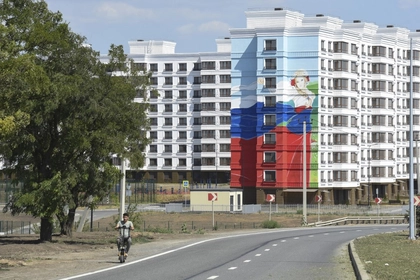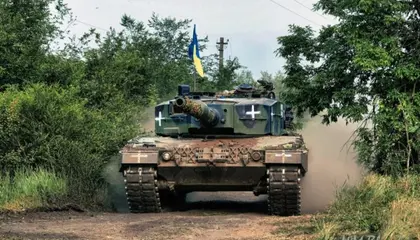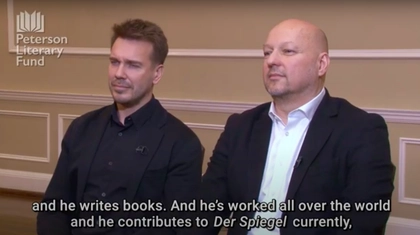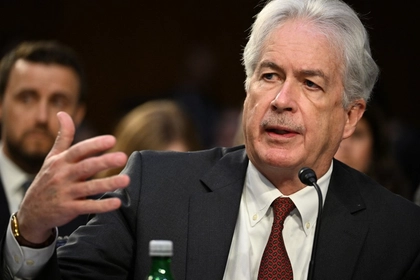Ukraine’s conservative and cautious summer counteroffensive continued with territorial takeovers of three villages in the Zaporizhzhia Region and thrusts in two other combat zones, but key challenges for Ukrainian forces are coming into greater focus.
Ukrainian forces newly deoccupied three villages in the southwestern part of Zaporizhzhia Region – Lobkove, Levadne and Novodrivka. They join four other villages deoccupied by Ukrainian forces in the western Donetsk Region near its administrative boundary with Zaporizhzhia Region – Neskuchne, Storozheve, Blahodatne and Makarivka.
JOIN US ON TELEGRAM
Follow our coverage of the war on the @Kyivpost_official.
The seven villages and regained territory span 90 square kilometers.
Kyiv’s Conservative Strategy
The gains are part of the Ukrainian military’s continuing strategy to carefully press into Russian-occupied territory, largely using limited probes.
Kyiv Post yesterday reported that these “combine infantry, drones and armored vehicles in targeted assaults of short-range objectives usually no more than one or two wood lines or villages away.”
None of the Ukrainian assaults thus far have featured large numbers of mechanized infantry or tank units which could see hundreds of fighting vehicles deployed at one time. A typical Ukrainian armored brigade is likely to have 250-plus tanks and other armored vehicles of different types.
Ukraine has formed, equipped and received NATO training for at least eight such new brigades.

Moscow Imposes Russian Car Insurance in Occupied Ukraine by 2025
By contrast, Kyiv Post’s military expert, Stefan Korshak, notes that “Kyiv’s top military leadership has, to date, followed the conservative strategy of eroding Russian formations over time, gaining ground incrementally, avoiding major risks and limiting Ukrainian casualties as much as possible.”
In an analysis today for the Center for European Policy Analysis (CEPA), the UK’s former Lt. Gen. Ben Hodges said “it seems that the Ukrainians are still probing, pressing, looking for vulnerabilities to exploit, reinforcing local tactical success where they find or create it… And some of what we are seeing is intended, perhaps, to confuse the Russians as to where the main attack will eventually be delivered.”
“There is a big difference between starting an offensive, and the main attack or main effort of the operation,” Hodges continued.
“The offensive has clearly started, but not I think the main attack. When we see large, armored formations join the assault, then I think we’ll know the main attack has really begun.”
Think Ukraine’s Offensive Has Started? Wait for the Heavy Brigades https://t.co/ojFPZFdWTS
— Ben Hodges (@general_ben) June 12, 2023
On Tuesday morning, Moscow claimed it had captured several German Leopard tanks and US Bradley infantry fighting vehicles, releasing footage showing Russian troops surveying the vehicles supplied to Ukraine by Western countries.
"Leopard tanks and Bradley infantry fighting vehicles. These are our trophies. Equipment of the Ukrainian armed forces in the Zaporizhzhia region. Servicemen of the Vostok group inspect enemy tanks and infantry fighting vehicles captured in battle," the defence ministry said in a statement.
Military Movement in Three Parts
The Ukrainian ‘slowly but surely’ strategy continued to play out over at least three parts of the 1000 kilometer front along Russian-occupied territory: part 1) near the administrative boundary between Donetsk and Zaporizhzhia; part 2) southwestern Zaporizhzhia,and; part 3) central Donetsk including Bakhmut.
In Part 1, Ukrainian forces continued to push south from four recaptured villages near the TO518 road toward Staromlynivka, a strategic point on the route to Mariupol. They appear to be moving along the Mokri Yaly river, where Russian forces have blown a bridge.
However, Russian sources reported that they recaptured Makarivka, the southern-most village along the axis. Ukrainian Deputy Defense Minister Hanna Malyar denied this and said that Ukrainian forces still control Makarivka. In Part 2, following the deoccupation of Lobkove, Levadne and Novodrivka, Ukrainian forces may have the option of pushing south toward Tokmak, which has been heavily shelled, and Melitopol, and thereby flank Russian forces on the land bridge between Russia and occupied Crimea.
Ukrainian forces from the 35th Marine Brigade released footage of the liberation of Makarivka, Donetsk Oblast. pic.twitter.com/igNC0e1sFJ
— OSINTtechnical (@Osinttechnical) June 13, 2023
Tokmak is one of the occupied cities that is heavily fortified and in the final line of defense. It is a key hub on the only railway line between Russian forces in the east of the occupied land bridge and the Kherson Region to the west.
Or Ukrainian troops could turn east via Rivnopil to link up with the Ukrainian contingents along the TO518 route toward Mariupol. At the same time, Russian forces shelled the Ukrainian-controlled town of Orikhiv with guided aerial bombs.
As a result one person was killed and another one was injured, the Zaporizhzhia Regional Administration reported.
In Part 3, the Armed Forces of Ukraine seized control of 16 square kilometers around Bakhmut, according to Deputy Defence Minister Hanna Malyar. "Advancement of troops: left flank – 1.5 km, right flank - 3.5 km; the area of the territory taken under control – 16 sq. km," Malyar posted on Telegram in an unverified claim.
Obstacles Ahead
However, Ukrainian gains and forays are likely occurring along the first line of Russian defenses, eg, minefields and some trench systems with infantry. Thereafter, according to satellite imagery, there are likely to be concentric lines of:
- Steel hedgehogs and concrete dragons-teeth obstacles to stop tanks and other armoured vehicles.
- Anti-tank ditches that are often vast, e.g., five or six meters wide by five or six meters deep.
- Fortified personnel trenches and concrete bunkers at the rear of the defense, where defensive reserves are kept.
Sir Richard Barrons, the former commander of the UK Joint Forces Command, yesterday told AP that the Russian military has built “textbook” defensive lines and adjusted its tactics following its retreats from the Kharkiv and Kherson regions last fall under the brunt of a swift Ukrainian campaign.
In addition to formidable physical lines of fortification and defense, experts yesterday also pointed out other challenges that the Ukrainian military is likely to encounter. Barrons told AP about the improved Russian ability to both counter and use drones and also noted that Moscow has learned to better keep key assets like command headquarters and ammunition dumps out of artillery range.
“And they have sharpened up how they can fire at Ukrainian artillery and tanks when they spot them,” the retired general said to AP.
“So if you add all that together, everybody knows this will be a harder fight than for Kherson or Kharkiv in the autumn of last year.
“People are still using those two successes, and they were successes, as benchmarks, which I think is unfair, unreasonable in the circumstances,” he said.
Russian forces have also improved their electronic/communications weaponry over the last 16 month, according to Ukrainian military analyst Oleh Zhdanov.
He said the Russians increasingly use drones and improved electronic warfare to jam those from Ukraine, according to AP.
Additionally, Russia has stopped using battalion-sized tactical groups it deployed early in the war and shifted to smaller units, Zhdanov said.
While the Russian air force has operated in relatively small numbers, it has now modernized its stock of bombs to turn them into gliding weapons that have proven efficient, he said.
The 500-kilogram (1,100-pound) bombs adapted with a GPS module can inflict massive damage. “The Soviet Union produced those bombs in uncountable numbers,” Zhdanov said to AP, adding that the Russians drop up to 50 a day for a “major psychological effect.”
These conversions allow the Russian air force to ramp up strikes on Ukrainian forces without risking its warplanes.
As reported by AP, the Royal United Service Institute, a London-based think-tank that focuses on defense and security issues, noted other Russian improvements in a recent report, including “better thermal camouflage for tanks; nimbler deployment of artillery into multiple positions, including integration with drones to avoid losses; and attacking Ukrainian artillery with loitering munitions that hover until they acquire a target” and interception of GPS-guided rockets fired from Western-supplied launchers such as HIMARS.
However, a key factor remains the psychology of the two combatant sides, according to Hodges who held senior command positions in Iraq and Afghanisation with allied forces.
“Defenses are only as good as the soldiers occupying them and covering those obstacles. I’m not impressed with the fighting capabilities of the Russians in most places, and the vicious in-fighting we see between the various Russian leaders, (e.g., warlords like Prigozhin and Kadyrov) highlights the lack of cohesion on the Russian side. I imagine the UAF will exploit this,” Hodges said.
You can also highlight the text and press Ctrl + Enter






